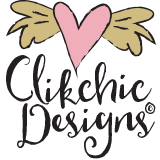Drop shadows can have a dramatic affect on your layouts and can provide a variety of different effects and looks. Adjusting a drop shadow can really make your layout pop, or can spoil it. The trick is creating the right type of drop shadow for the effect you are trying to create.

The first image has a subtle drop shadow, a short distance from the image, with the shadow being heavier on two sides of the photo, illustrating that the light source is coming from the top left. The small size of the shadow also suggests that the photo is likely to be directly on top of the background paper as it might be on a traditional paper layout.
The second photo has a heavier and larger drop shadow again heavier on two sides of the photo indicating that the light source is coming from the top left. The increased size and softness to the drop shadow makes the photo appear that it might be further away from the background paper. Such a shadow might also be used for objects such as page pebbles, or other embellishments which would appear to be thicker in real life than a photo. In this instance, used on a photo which is less than a millimetre thick, it makes the photo appear to float on the page.
The third photo has a very large drop shadow and is much softer looking than the previous two. The shadow has dispersed just as shadows do in real life when an object is a distance from something. The closer the object is to where the shadow is being cast, the darker, smaller and sharper the shadow will become. This shadow makes the photo appear as if it is floating some distance above the page and does not lend itself towards a realistic looking paper style layout as much as the first shadow does.
The fourth photo has a small brown drop shadow with the colour altered from black to dark brown. The shadow is set at zero distance giving an even size around the photo and indicating that the light source might be directly above the photo. This form of drop shadow gives a lovely soft look and is useful for creating a realistic and soft looking shadow around the photo. This effect is particularly useful for freestyle layouts and a variety of other effects and looks.
The fifth photo has a larger, softer drop shadow, at zero distance with the colour altered from black to dark brown. The shadow has also had noise added to give a less even look. The size of the drop shadow does not lend itself to a realistic photo on top of paper look, however it does almost give the appearance that the photo is set behind the paper instead of on top of it. To enhance this effect you may wish to reduce the opacity of the shadow and include an inner shadow on the photo itself. It is another style of drop shadow which may be useful for freestyle layouts.
The sixth photo does not look at all like it has a drop shadow but like it has a frame around it or that the paper may have been embossed. This look was achieved by using zero distance, changing the colour to dark brown and experimenting with the contour of the drop shadow. Once again, not a very realistic looking drop shadow, but perhaps an interesting effect to experiment with!
Knowing how to make the most of your drop shadows is a very useful tool to have under your belt and it can be fun to experiment with them. Why not give it a go in your next layout?
© Clikchic Designs 2006 All Rights Reserved
Not to be reproduced without express written permission.
Subscribe to the Clikchic Designs Newsletter and get a FREEBIE! There are ongoing freebies as well. Don't worry, we won't inundate you with emails.
